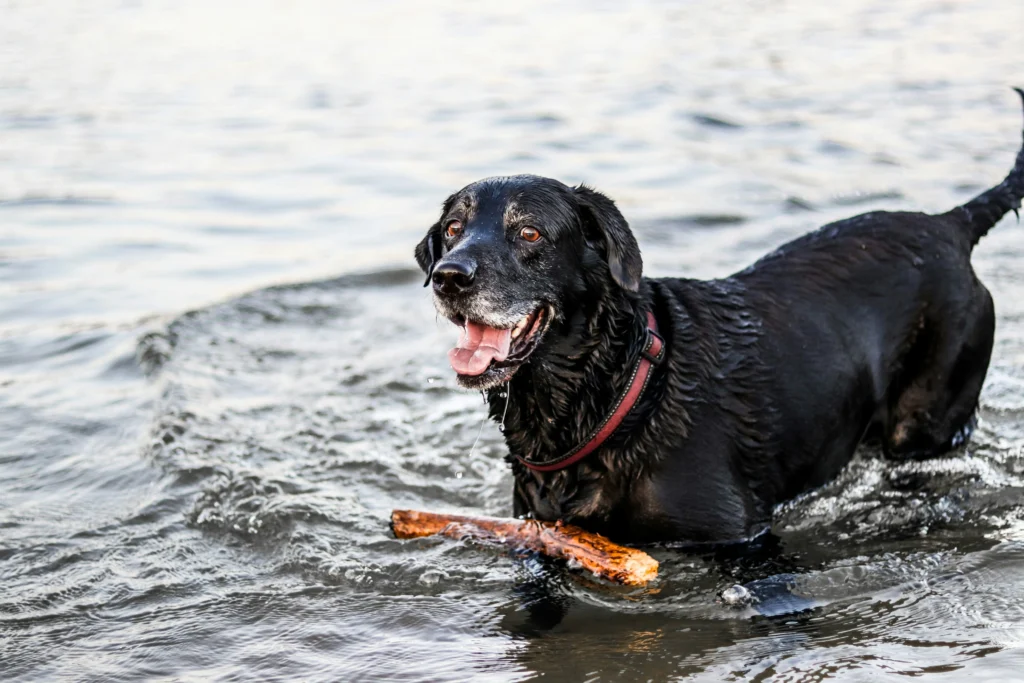Senior Pets: Physical, Mental, and Behavioral Changes
January 18, 2023
Whether we like it or not, aging will happen to us all – including our pets! Older pets can have physical, mental, and behavioral changes that require more care and patience.
Being proactive will help pets age gracefully and minimize problems. Here are some of our favorite tips for helping your pet thrive during their golden years.
1. Play brain games
Did you know that mental stimulation is just as enriching as physical exercise?! Get creative with nose work, clicker training, games, general obedience, or simply reinforcing commands that your pet already knows.
Go for a “sniffari” in your neighborhood or try a new location. Whenever possible, use puzzle feeders for meals. Some favorites for dogs are the Busy Buddy, Kong, Kong Wobbler(goes to new website)(opens in a new tab), and snuffle mats(goes to new website)(opens in a new tab). Cats may enjoy toys that simulate digging(goes to new website)(opens in a new tab), hunting(goes to new website)(opens in a new tab), or chasing(goes to new website)(opens in a new tab). Rotate puzzle feeders regularly to maintain interest.
2. Maintain a healthy weight
Obesity is a major problem for many senior pets. Excess weight can shorten your pet’s lifespan and affect the cardiovascular, respiratory, endocrine, and musculoskeletal systems. Partner with your veterinarian to determine your pet’s body condition score (BCS)(goes to new website)(opens in a new tab) and create a weight loss plan if indicated.
Continue providing regular, low-impact exercise such as walking or swimming. Many senior cats actually have a higher metabolic rate, which can cause the opposite problem – being too thin. This can be compounded by conditions like chronic kidney disease, inflammatory bowel disease, or cancer. We recommend weighing your pet monthly to track trends.
3. Keep up with hygiene
Senior pets will need a little help in the hygiene department. Use baby wipes or pet wipes to keep your pet’s face and genital region clean, especially if they are a brachycephalic breed with extra folds.
Pets will need to be brushed and groomed more frequently to help with shedding and reduce matting. Consider a “sanitary shave” for dogs or cats with longer fur. Continue to brush your pet’s teeth regularly and discuss with your veterinarian whether they’ll need a dental procedure to address periodontal disease.
Offer more frequent potty opportunities to avoid accidents in the house. This can be a mid-day walk, doggie door, pee pads(goes to new website)(opens in a new tab), or an indoor potty(goes to new website)(opens in a new tab) for smaller pets. Diapers(goes to new website)(opens in a new tab) and a washable waterproof cover(goes to new website)(opens in a new tab) on their bed can help but be sure to rule out treatable causes of incontinence first.
4. Be proactive about comfort and safety
Many products exist to help pets gain traction: toe grips(goes to new website)(opens in a new tab), traction socks(goes to new website)(opens in a new tab), Paw Friction(goes to new website)(opens in a new tab), traction mats(goes to new website)(opens in a new tab), tread for hardwood floors(goes to new website)(opens in a new tab), and carpet runners(goes to new website)(opens in a new tab). And just as importantly – keep those nails trimmed!
Consider elevating(goes to new website)(opens in a new tab) food and water bowls and lowering the litter box(goes to new website)(opens in a new tab) for cats. You can use a harness(goes to new website)(opens in a new tab) to assist larger dogs who have difficulty rising or getting around. Offer comfortable orthopedic bedding. Smaller dogs who prefer to lay on a couch or bed would benefit from stairs(goes to new website)(opens in a new tab). A ramp(goes to new website)(opens in a new tab) can be used for the car. Assess your home for danger zones and implement “childproofing” options such as a baby gate to block the stairs.
5. Partner with your veterinarian
More health issues arise in senior pets than in their younger counterparts. We recommend biannual physical exams for this phase of life as well as regular screening blood work and blood pressure checks.
Let your veterinarian know if your pet develops new or sudden changes in their appetite, thirst, elimination habits, mobility, or behavior changes such as irritability, altered sleep patterns, pacing, disorientation, vocalization, house soiling, or increased anxiety.
Fact: A pet is considered “senior” when they’ve reached about 75% of its life expectancy. There is variation amongst breeds and sizes of dogs, but in general small dogs are considered senior at 10 years, medium-sized dogs at 9 years, large-sized dogs at 8 years, and giant breed dogs at 6 years. Cats are considered seniors at 11 years.
Written by Dr. Kerry Skorup
Related Posts

DVM Blog Post - Osteoarthritis AKA Degenerative Joint Disease
CAC Staff | September 12, 2024
Osteoarthritis, also known as degenerative joint disease, is a condition which will affect most dogs in their lifetime. As dogs age the incidence of arthritis increases and other confounding...


